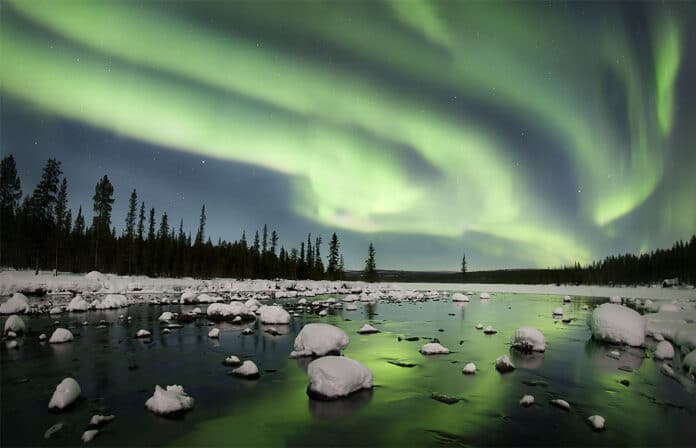Light has always had a special place in the Nordic countries. From the dark nights in winter to the endless sunlight in summer, and there are many ways to turn light into a living. Some preserve it in a photograph, others light up our everyday lives artificially. This Sunday, May 16th marks the International Day of Light.
People from all over the world travel to the northern parts of Scandinavia, Iceland and Finland to experience the light found here.
”The special quality of nordic daylight with its low angles, and slow, beautiful day-night transitions of long sunrises, sunsets, and the blue hour are very unique,” says Lighting Design Researcher and Associate Professor Ute Besenecker at KTH, the Royal Institute of Technology in Stockholm.
The uniqueness draws many people in and fascinates. And it seems those who at some point become enchanted by the nordic light can not help but pursue it.
”I never grow tired of capturing the light,” says photographer Peter Rosén. ”It is my life and my work.”
Our relationship to light
On the most fundamental level light, through photosyntheses, is at the origin of life itself. It has been a cornerstone of development everywhere.

”Light is as fundamental to us as food,” explains Dr. Besenecker. ”Without light, there would not be a world around us that we could see, no colors, no shapes or spatial experiences.”
The amount and quality of light we are exposed to can also affect our circadian rhythm, our sleep and our mood, and Dr. Besenecker points out that: ”A walk outside during daytime will provide much higher light exposure than any electrical indoor lighting.”
People in the Nordics have developed a particular relationship to light, we go through the seasons and the changes in light.
”The high variability of light throughout the day, and of course between the winter and summer seasons shape people’s customs, color preferences, and general relationship to light,” she says.
From nordic light to northern lights
In the Nordic countries artificial light and lighting design is an essential part of our daily lives. But our foundation lies in the relationship to what we have been given from above.

Nordic cultures carry much significance surrounding light. From the endless brightness in summer to the deep darkness in winter creating light has become a part of our culture. And even when the absence of sunlight is most evident the sky sometimes lights up.
”Most of the photography workshops and tours that I guide are because of the northern lights,” says Rosén. He works as a guide and photographer in Abisko, northern Sweden.
People from all over the world travel to places like Swedish and Finnish Lapland, Tromsø in Norway and to Iceland hoping to see the sky dance just for them.
”It’s hard for someone who has never experienced a pitch dark sky lighted up by the Milky Way or northern lights to understand what it is like,” Rosén explains.
A dream come true
For those fortunate to have witnessed the polar lights it is not difficult to understand why some travel far to have the experience.
Rosén tells the heartwarming story of a young French woman who, for years, had traveled the world in search of a glimpse of the northern lights, but with no success – until she came to Abisko.
”She had read a storybook as a child about the northern lights and wanted to fulfill her childhood dream and see them dance. Despite a disappointing forecast, the lights came out and danced for her several nights in a row. She cried of happiness.”
And she is not the only one. Rosén has introduced amazed travelers from all over the globe to the wonders of the Aurora Borealis.
When darkness fades

We also need to respect the light, where and how we expose things to it. Light pollution is a growing problem.
”Light has great significance to tourism here in Sweden,” says Rosén. ”Light pollution is a threat to what I do. Astro photography relies on natural conditions without artificial light.”
From Abisko, where he does most of his photography, he says he can spot lights from Kiruna 10 miles away and Narvik 9 miles away. ”There are not many places left where you do not see or are affected by artificial light.”
As for humans, wildlife is dependent on rhythms that are dictated in part by light. The WWF lists light and noise pollution together with other types of pollution as significant threats to the wellbeing of humans and wildlife. It is also an important topic of research.
”We are involved in research on how to minimize the impact of electrical lighting in outdoor environments to support local wildlife and ecology and at the same time enable human use and comfort, especially during the dark season,” says Dr. Besenecker.

The International Day of Light celebrates light in all its forms and how it is a centerpiece in culture and art, science, and essential for education, sustainable development and medicine. Sunday May 16th The United Nations and UNESCO observe the International Day of Light.






